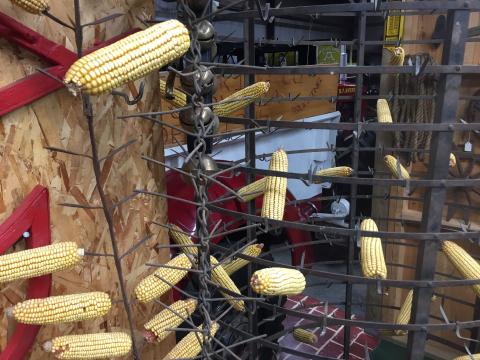In the early years, all corn was picked by hand. There were special pegs and hooks that were strapped onto the hand to make this easier. Throughout the day, the best ears were saved and put in a box attached to the triple box wagon. These were stored in an unheated upstairs bedroom to dry completely on racks such as pictured. In the spring, a few kernels were shelled off each ear and tested for germination. Those ears with the best germination were completely shelled and those kernels became the seed for next years crop. When corn was picked by hand, progress was slow. A triple box wagon with a bang board was hitched to a team. A well broke team would respond to voice commands so all people could be doing the picking. Sometimes the wife or older children would help with this task. The wagon was filled one ear at a time and driven to the crib and scooped into the crib at noon. After the noon meal, the farmer would return to the field to fill the wagon again in time for evening chores. It was considered exceptional if a person could pick 100 bushel in a day. Content can be used with the following standards: 4th grade SS 4.26 Changes to Agriculture in a lesson on methods of farming used in the early 1900s. For any use other than instructional resources, please check with the organization that owns this item regarding copyright restrictions.
2018.054.001 [Dryer, Corn]
Legal Status
Ownership of this resource is held by the Heartland Museum Foundation and has been provided here for educational purposes only, specifically for use in the Iowa Museum Association's "Teaching Iowa History" project. It may not be downloaded, reproduced or distributed in any format without written permission from the Rights Holder. For information on U.S. and International copyright laws, consult an attorney.

